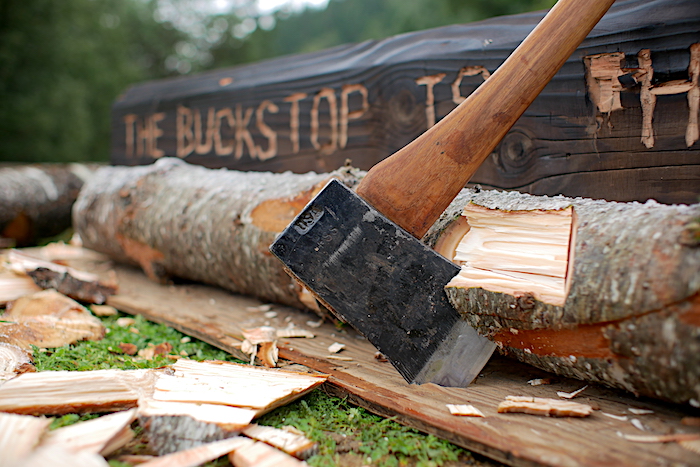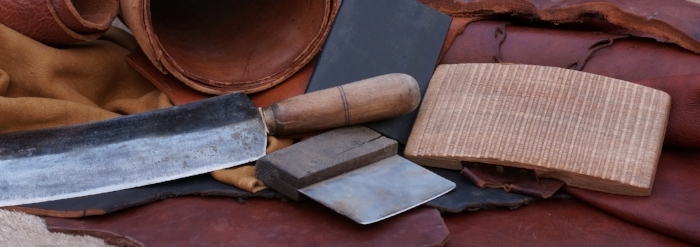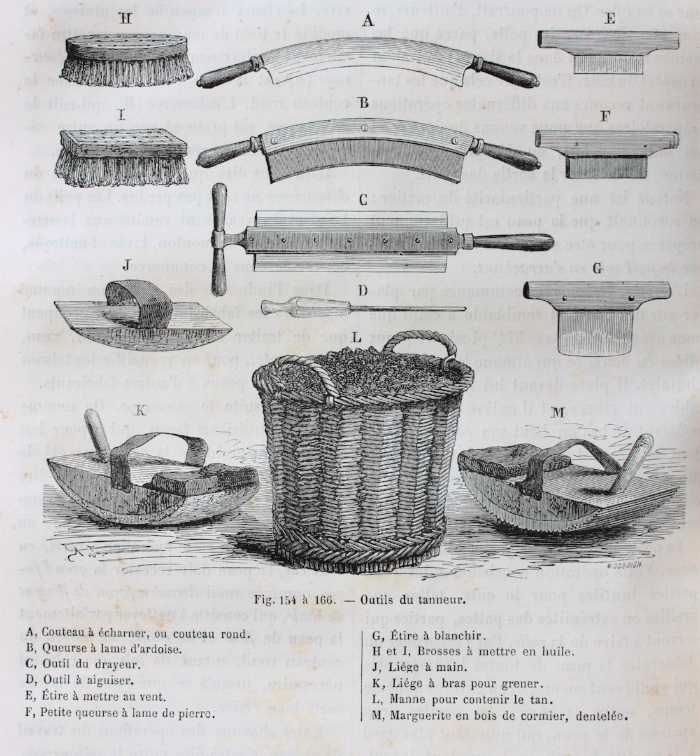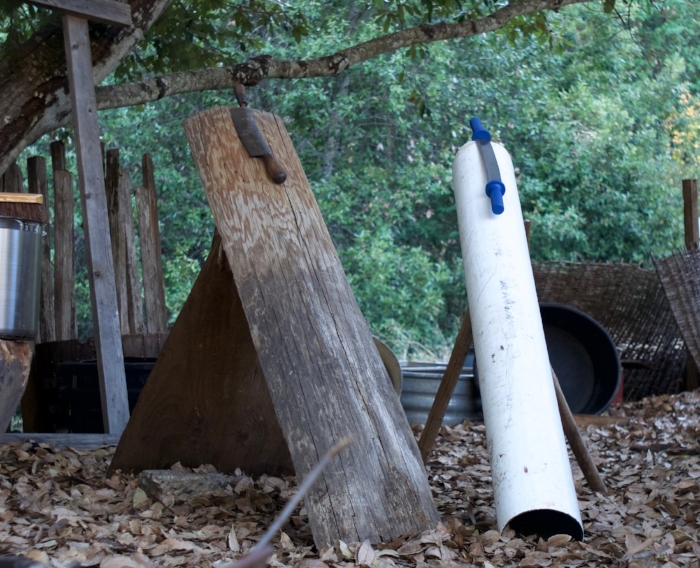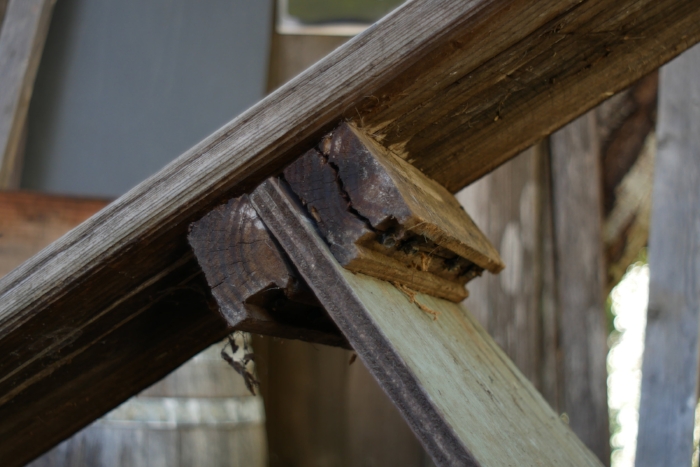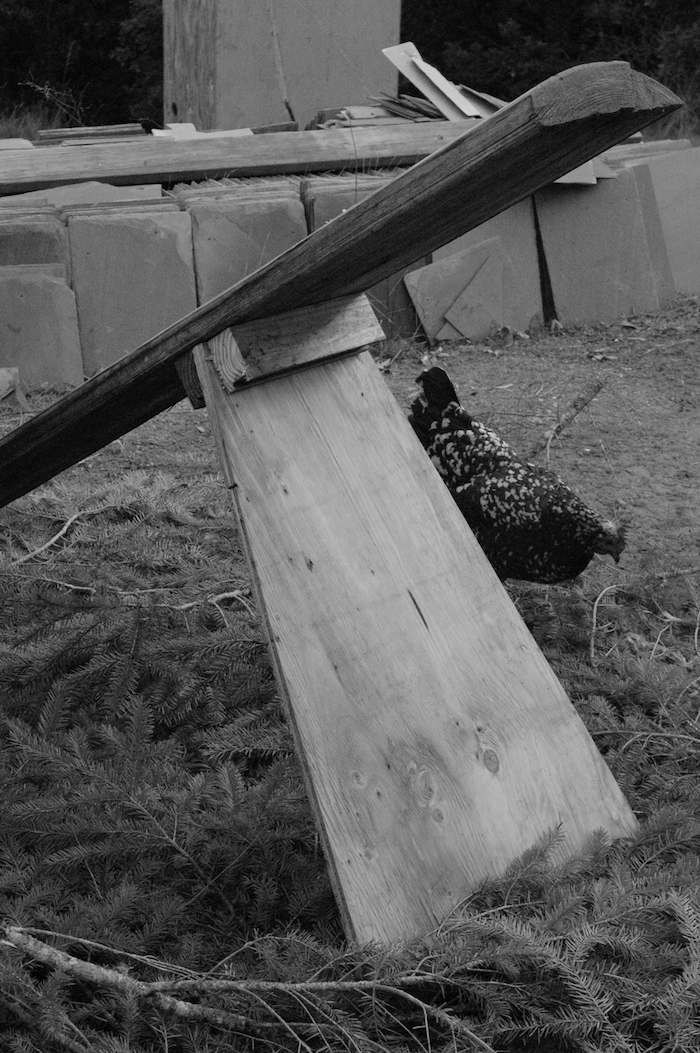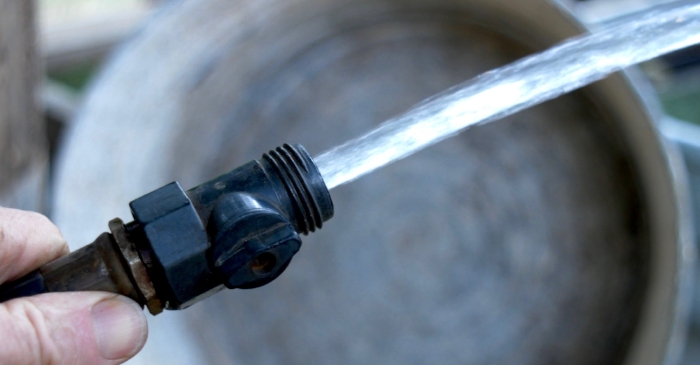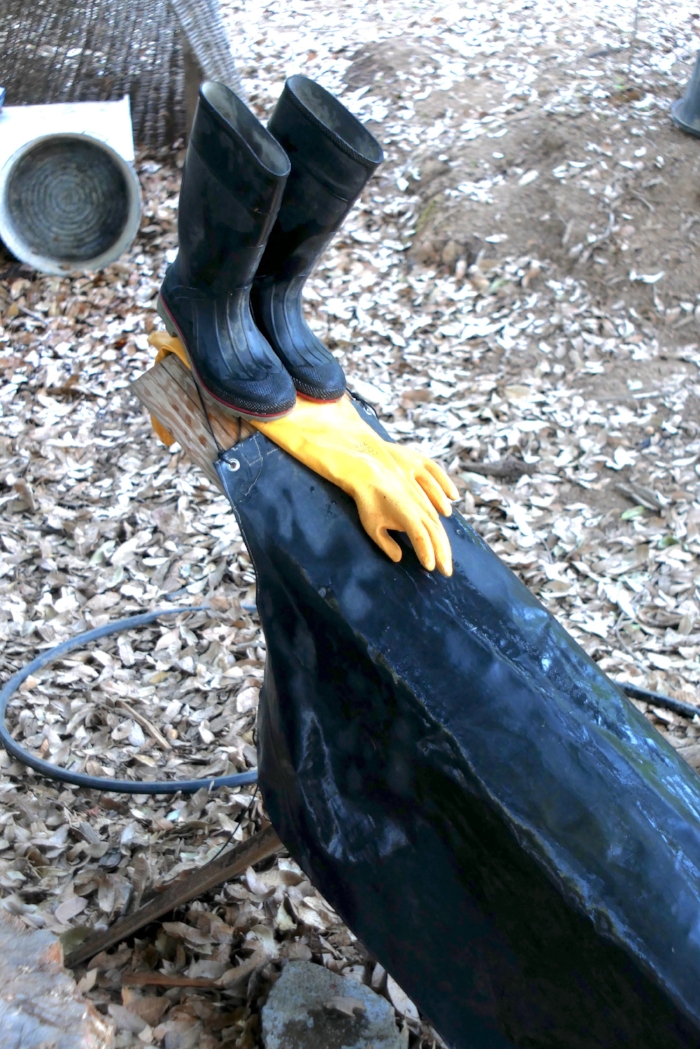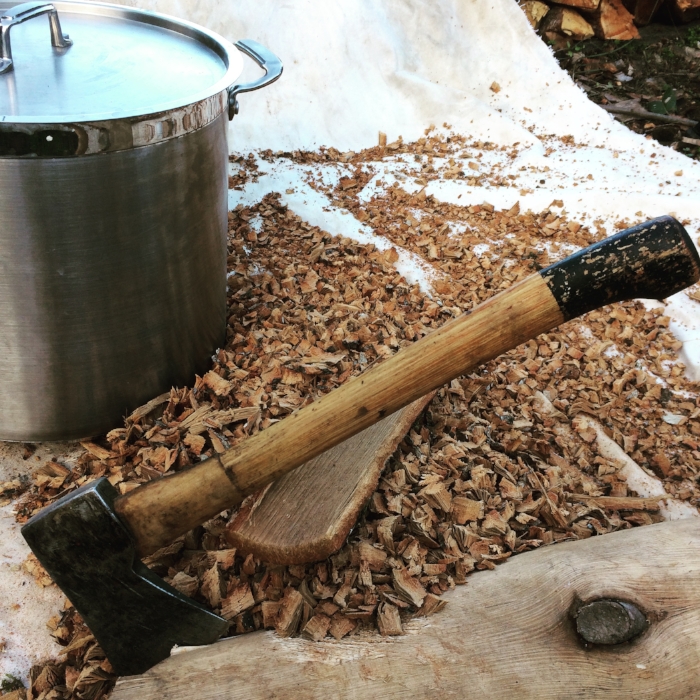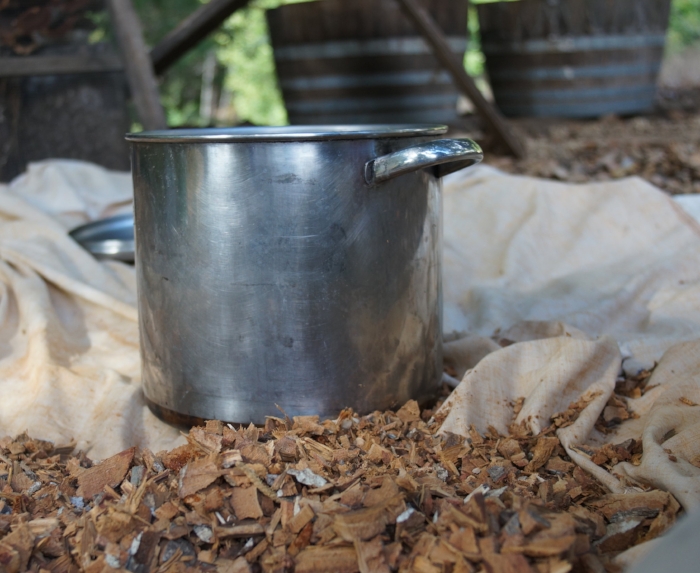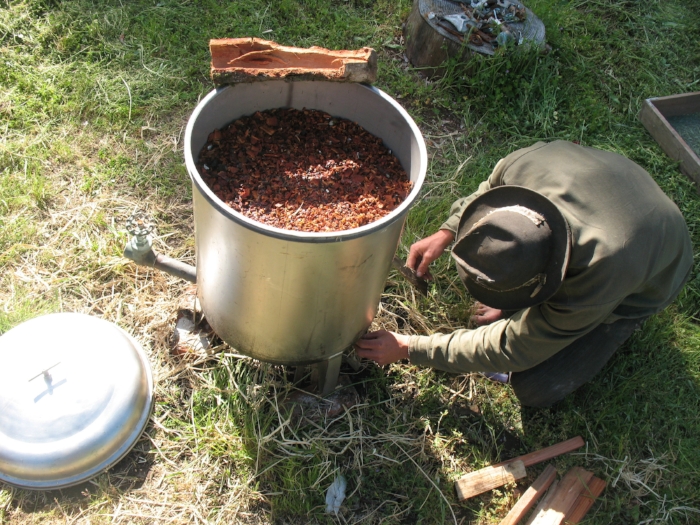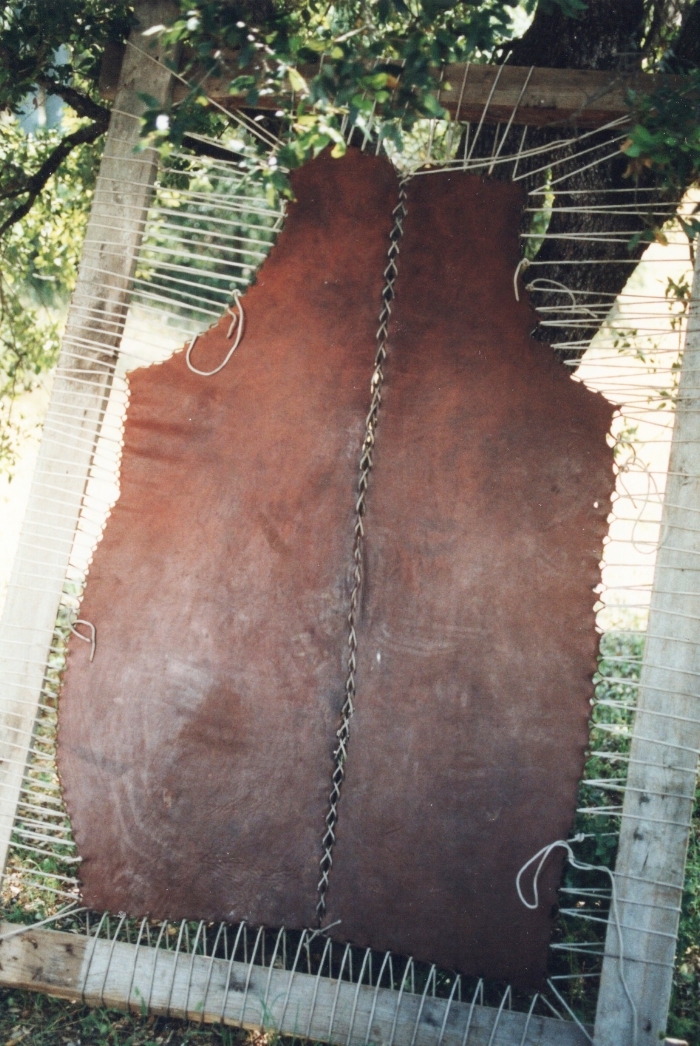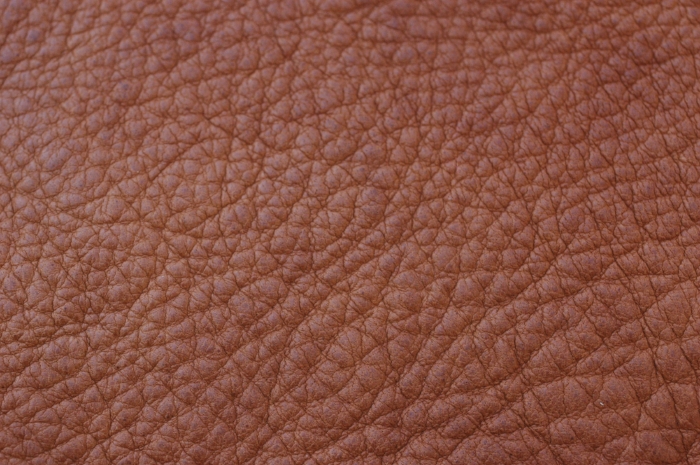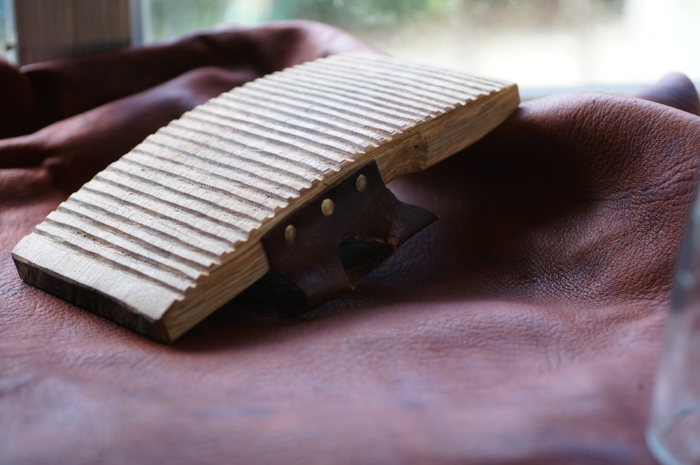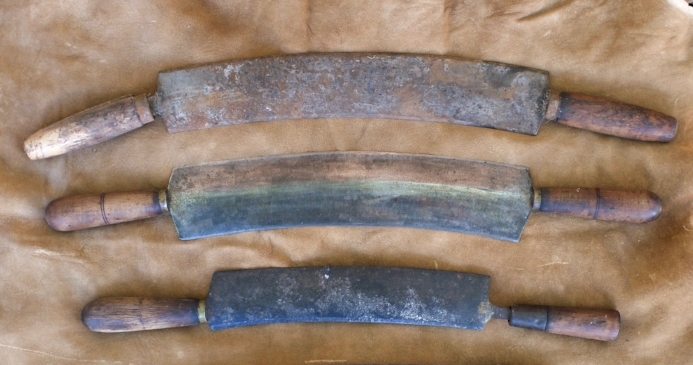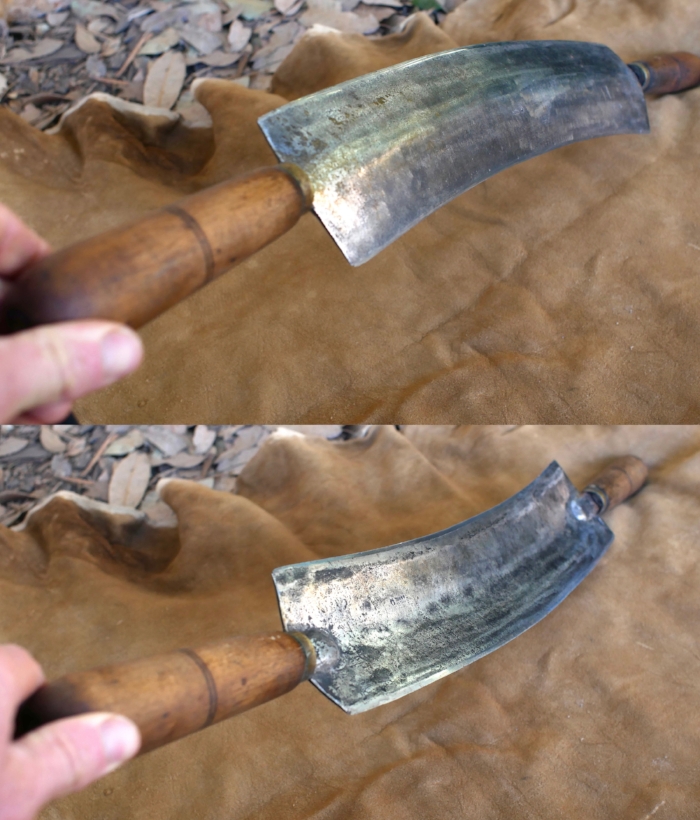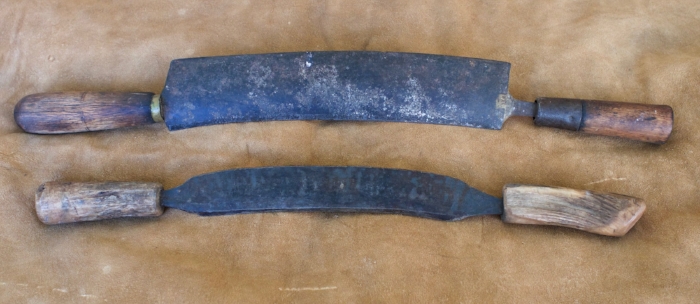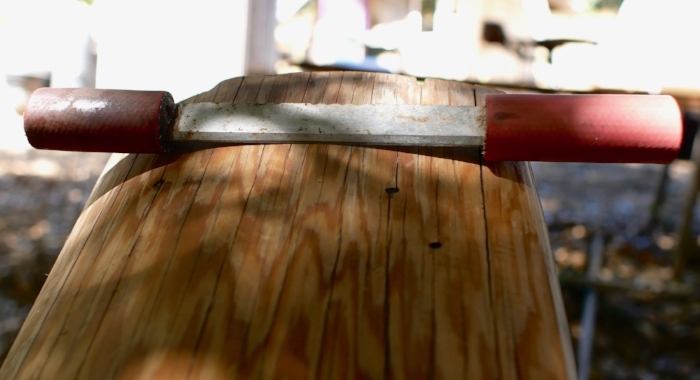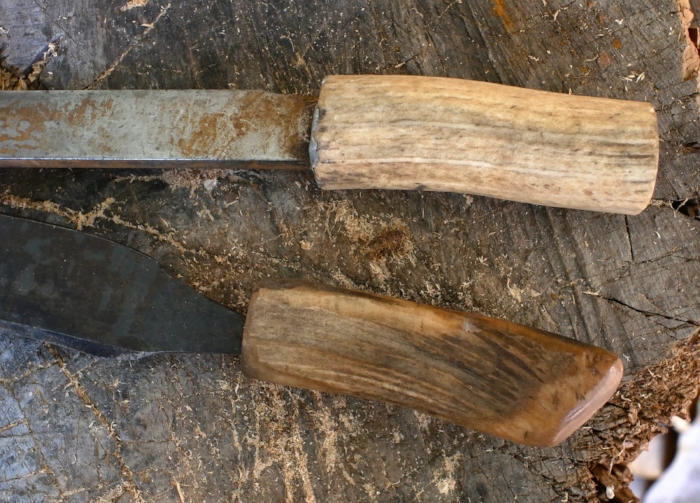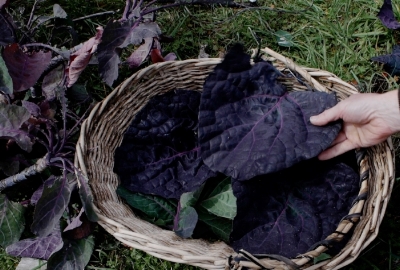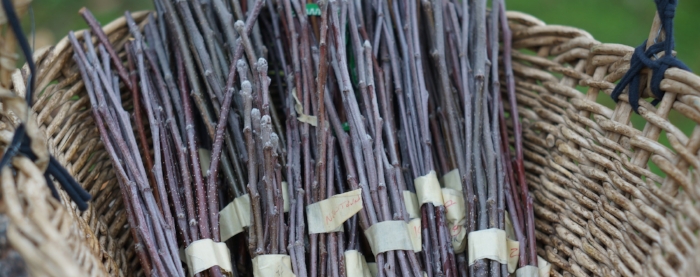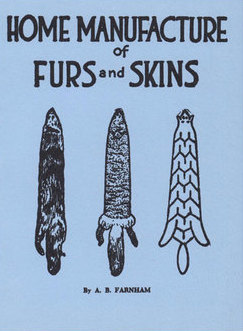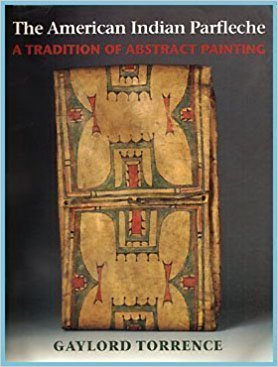It is a lot easier to have that confidence once a reasonable degree of physical competence is gained. We don’t want to have false confidence, but ultimately McLaren was right. As a dangerous tool, it needs to be taken charge of and used confidently, with commitment and purposeful intent to do the work at hand.
But he recommended that we learn to use the axe, then use it with purpose and confidence. When each swing feels utterly lacking in said confidence as to where it will end up, or whether it will bite or bounce off, and we are not sure how to gauge distance from hands to the blade, how do we learn to use it safely? A certain amount of time must be spent with the tool before it begins to feel natural and go where we want it to. Enter the Buckstop
Because it is vertical and not round like a backing log, it is even more likely to prevent the axe from coming over the back board and hitting the user. So, at a certain height, it is almost 100% sure to prevent deflected and follow through cuts to the legs while bucking. So, there is the obvious advantage in terms of just preventing accidents, but I think the benefits will extent further. With the fear of injury essentially gone, now we can chop with some impunity, which means any timidity caused by being uncertain of striking our target is no longer at play. This may be a significant factor in allowing one to relax a little and chop with more confidence while working on physical technique. A new user can experiment with things like wrist torque for increasing speed, without increasing danger. In order to chop at their best, the lighter axes that I would typically recommend people start with need to be used with a little snap to create adequate head speed. But experimenting with that head speed is the last thing I would want to see a very new user doing. Using the bucking wall though, you could experiment with that acceleration and with tweaking style and technique in general, without fear of injury. Finally, when you do screw up, it is pretty obvious and I would hope that every time the axe hit’s the wall or wooden base, it stimulates the question of what would have happened if that wall wasn’t there. Even when making the final severing cut at the end to separate off the round of wood, the axe hitting the wall means the axe would be coming through, and if we look at footing position it should give some idea of whether we were at risk for injury.
I think this simple device is a solid idea, and could fill a very important need in the learning phase until confidence and skill are gained. I also think it could build that confidence and skill faster if used with intent. It’s not forever, it’s just a training aid. Many axe competitors habitually wear chainmail socks in both training and competition. Safety is good. But, I would recommend not using this indefinitely, because it could very easily foster bad habits and a false sense of security, which brings me to the down sides.
The two caveats I would say are, first that the buckstop should not be used as an excuse to be sloppy and complacent. One should still concentrate primarily on technique and aim, with a relaxed style, and not on speed and power. Ultimately speed and power are earned over time and more importantly they are nearly useless without a good level of accuracy. Forcing speed and power under normal conditions is dangerous, but even with a backing wall, they still will tend to cause aim to suffer and should be pursued intelligently with an aim to improvement of overall effectiveness, of which power is not the main ingredient as every experienced axeman will tell you. I do however, as I said above, think that using the bucking wall could allow one to progress more quickly into not just speed and power, but efficient speed and power by liberating the trainee to experiment more without putting limbs at risk. Which leads to caveat number two.
One could easily develop bad habits and a false sense of security if released from the fear of injury. I actually think it will be hard not to do so, and it is probably even inevitable. If I were training someone from scratch, I would probably approach it as two different stages, where in the second stage with no Buckstop, they have to learn new important habits and reboot the brain into danger mode. There is, of course, the opportunity to learn some safety lessons if you are continually watching that back wall and every time you hit it asking whether or not you would have lost a toe or two, but that requires a sort of intent or presence of mind that many of us aren’t going to have. Try to use the barrier consciously with the intent of hitting that backing wall as little as possible and not as an excuse to flail away with impunity. When the wall is gone, certainly more awareness and presence of mind around possible errors is going to be essential. Regardless, I would try to make the switch from buckstop to no buckstop as consciously and soberly as possible.
As far as design goes, watch the vide All of them work. You can just use a log that is larger than the piece you are bucking, but the wall should work better than a log in that it easier to move around, often easier to come up with, more transportable and allows one to stand very close, which I tend to do in bucking with the short handled axes I use. It is probably also safer, since it is both taller and flatter. If the device is made with a wooden platform for the log, it will also protect the toe of your axe from sticking into the dirt. @watch.your.follow.through on Instagram pointed out that if there is no base at the front for the log to rest on, it allows the device to be moved easily along the back of the log as chopping progresses. That is true, but it is also probably easier to slide a log along a piece of plywood. In a design with no wooden platform at the front, you can just jam a piece of plywood under the section to be cut to protect the axe, though it may not be as effective. Given that this is a training device and not a long term tool, any minor convenience issues like those only matter so much.
I would encourage making something that is super easy to throw together with common materials or junk that is lying around. I like elegant solutions, which means making and using the simple, easy, cheap thing that works. I am very resistant to keep tweaking the thing and turning it into a design project. Many tweaks could prove useful or clever, but the device that works and is actually built because it is so easy to put together is the best one, because that is the one that will actually be in use. Keep it simple and start using it, worry about tweaks later if they really seem compelling for some reason. If you have a saw and either some nails and a hammer or a screw gun, building one should be very fast. So fast in fact that it shouldn’t be a big deal to build an entirely new one or cannibalize the first to build a new one if it seems worthwhile.
I made them at different heights and it looks like 10 to 11 inches will be best. One I made with a 2 x 12 board had to have the front edge chamferred off as I hit the handle on it a few times. If the back stop is plywood, it probably wouldn’t damage the handle. Unless it needs to be shorter for portability, I think that for cutting 16 inch firewood lengths, 5 feet (150cm), or 6.5 feet (200cm), are going to be the magic numbers, with a 5’ wall, you can safely and comfortably cut 3 notches before moving it along and with a 6.5’ wall, you can make 4. But I would not hesitate to use almost any length if it’s easy or what you happen to have on hand.
As far as using the buckstop to train yourself or anyone else, here are my thoughts. First of all, this is so awesome! I’ve not had the opportunity to train someone from scratch, but I’ve often shuddered at the though of teaching someone to buck for the first time. This tool makes that so much easier. We can both exhale a sigh of relief and work on aim and a relaxed technique without worrying about safety. We can also work on the mechanics of acceleration and other technique stuff that would be much more dangerous to toy with otherwise. If used consciously, we can also get some good feedback on when the axe comes through or over the log and whether it might have hit a body part, trying to form good habits regarding body placement. Footing placement should be conscious as otherwise students might tend to stand right behind the cut with feet together, rather than in a safer wide stance. I think in a long term group or fixed camp such as scouts or a multi-day class it might be good to have one for each student. That way every cut in the board adds to a personal history. The wall could also be painted initially so that cuts show up better. Not every cut to the wall really indicates an accident, but it means something. For a more formal training for kids, I could see having a graduation test at some point where you have to buck so many feet of log with a freshly painted wall and if you make no cuts in the wall or base and meet some other criteria, you get to burn the thing ceremoniously and move on.
It could also be very useful for the student to carry out comparative lessons about such things as chopping styles and angles of cut. Also for trying different grinds and tools, but it can all be done safely. You can not only show people what can go wrong, you can have them do it, which will drive the point home much better, without driving the axe into their leg.
I do think that when it’s time to ditch the thing there should be a hard reboot on safety and awareness. I noticed just testing it briefly that I became very lax about footing placement and edge awareness. If you’re working on your own, you have to be your own bad guy, which is not always easy. If training someone else, be the eyes they need to help them cultivate that constant awareness of the edge and of follow through in relation to their body parts. When it’s time to move on, there really will need to be an emphasis on the fact that the game just changed and there are now real consequences and you can’t just hit NEW GAME after a serious accident.
As I said, I don’t think this should be a long term solution. I think it should be used to the best effect, then gotten rid of or it will cultivate bad habits and dependence. Switching back and forth could prove dangerous, because the two mindsets will be quite different. It is also more work to have it available, to move it to the logs or the logs to it. A skills over gear mindset doesn’t accommodate unnecessary accessories. Make a crappy one out of whatever cheap or free junk is available, don’t fix it unless it’s causing you problems, use it mindfully, then get rid of it and reboot your brain into high safety alert mode.
I think this device is going to prove very useful in certain contexts if it is used with intent. Let me know here or on YouTube if you try it, as I would like to get some feedback. As always stay safe and keep the red stuff inside.


